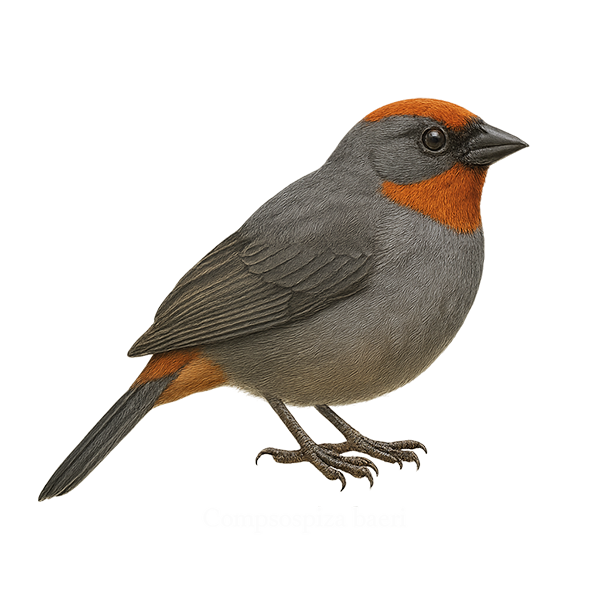Your wildlife photography guide.
Explore the baer's sparrow in detail, study its behavior, prepare your shots.
Where to observe and photograph the baer's sparrow in the wild
Learn where and when to spot the baer's sparrow in the wild, how to identify the species based on distinctive features, and what natural environments it inhabits. The WildlifePhotographer app offers tailored photography tips that reflect the baer's sparrow’s behavior, helping you capture better wildlife images. Explore the full species profile for key information including description, habitat, active periods, and approach techniques.
Baer's Sparrow
Scientific name: Poospiza baeri

IUCN Status: Near Threatened
Family: THRAUPIDAE
Group: Birds
Sensitivity to human approach: Suspicious
Minimum approach distance: 10 m
Courtship display: November to December
Incubation: 12-14 jours
Hatchings: November to January
Habitat:
High-altitude shrublands, open grasslands
Activity period :
Primarily active during the day, with peak activity in the morning and late afternoon.
Identification and description:
The Baer's Sparrow, or Poospiza baeri, is a small passerine bird belonging to the Thraupidae family. It is primarily found in the mountainous regions of South America, particularly in Argentina. This sparrow is characterized by its subtle plumage, often in shades of brown and gray, allowing it to blend into its natural habitat. It mainly inhabits high-altitude shrublands and open grasslands. Its song is melodious yet discreet, often heard before being seen. The Baer's Sparrow is a relatively suspicious bird, preferring to keep its distance from humans.
Recommended lens:
400 mm – adjust based on distance, desired framing (portrait or habitat), and approach conditions.
Photography tips:
To photograph the Baer's Sparrow, it is advisable to use a telephoto lens of at least 400 mm to capture detailed images without disturbing the bird. Wait patiently in a discreet spot and wait for the bird to appear. The early morning hours are ideal for the best natural light. Try to capture the bird in its natural habitat, highlighting the contrasts of its plumage with the environment. Pay attention to its song to anticipate its movements and adjust your framing accordingly.
The WildlifePhotographer App is coming soon!
Be the first to explore the best nature spots, track rutting seasons, log your observations, and observe more wildlife.
Already 1 449 wildlife lovers subscribed worldwide

